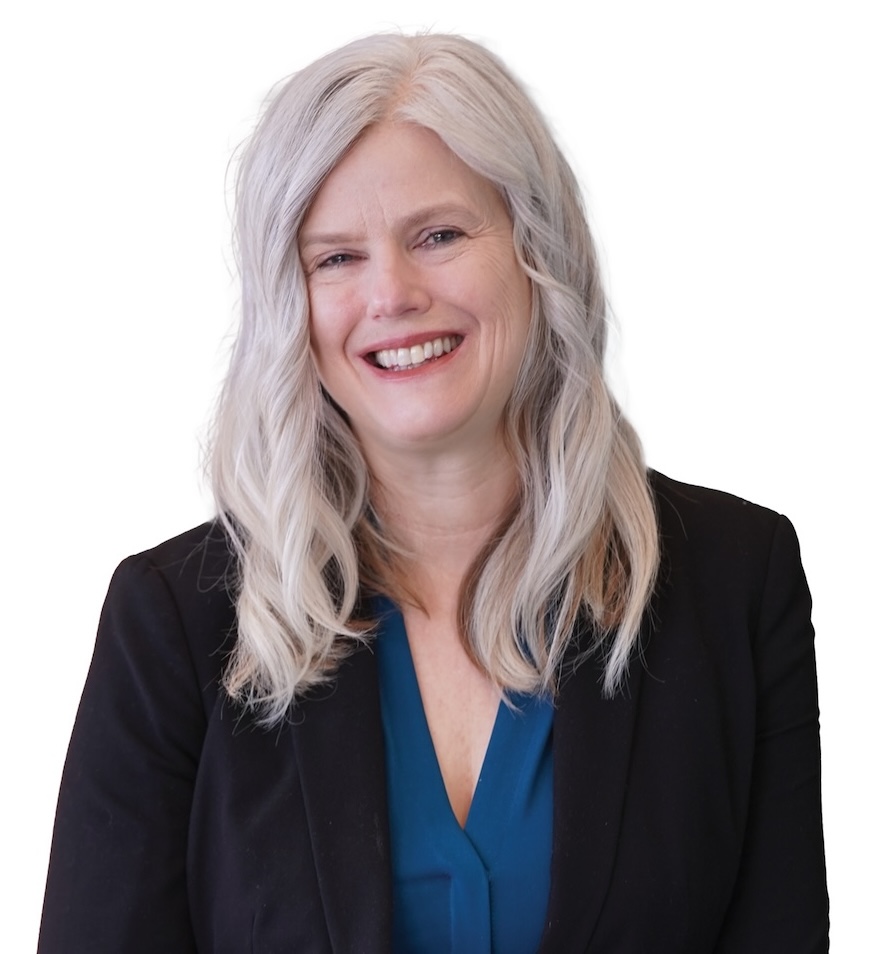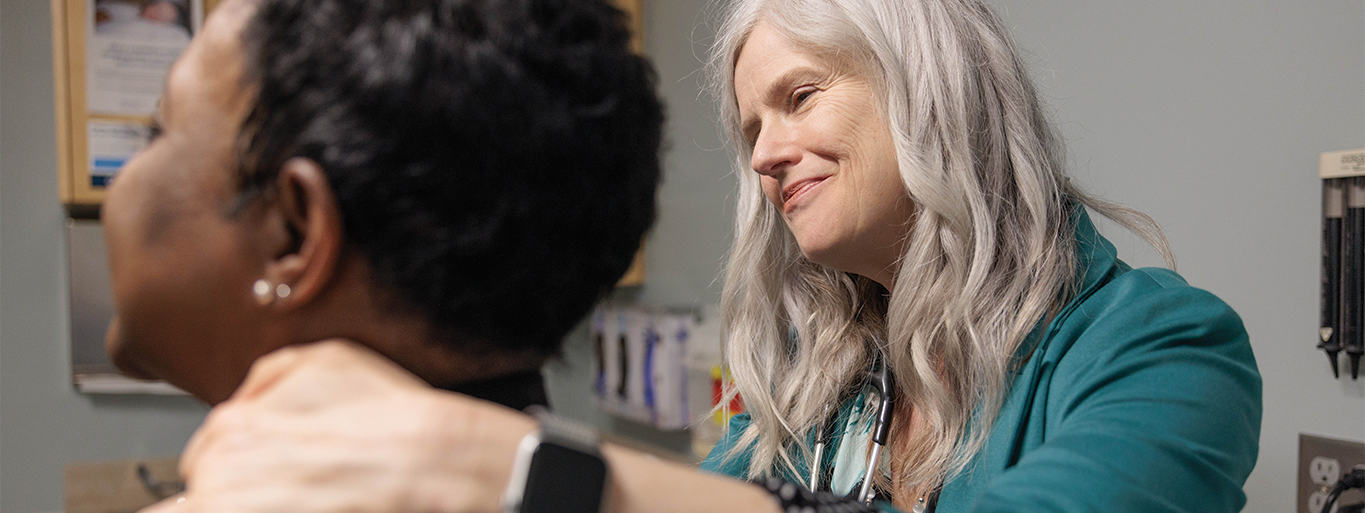Fighting Cancer with Science and Service
In 2018, Molly Cassidy was a new mother whose biggest looming challenge was taking the Arizona state bar. When she saw a doctor for what she thought was a persistent earache, the diagnosis turned her life upside down.
She had stage 4 oral squamous cell carcinoma, an aggressive form of head and neck cancer. After enduring a grueling treatment regimen of surgery, radiation and high-dose chemotherapy, she was declared in remission and rang the bell in celebration.
It didn’t last. She soon discovered a tumor on her neck that quickly spread to her mouth, neck and lungs. The prognosis was grim. Cassidy started researching end-of-life care options and writing letters and cards for her son’s future milestones.
One remaining option was a pioneering clinical trial led by Julie Bauman, a physician who specializes in head and neck cancer and is now the head of GW’s Cancer Center. The trial involved creating a personalized mRNA vaccine designed to target the specific genetic mutations of her tumor. After nine rounds of immunotherapy, no signs of cancer remained. Four years later, she is still cancer free.
It’s a story Bauman, who also has a master’s in public health, shares to illustrate how breakthroughs in research and treatment are showing promise for even some of the most difficult-to-cure cancers.
GW Magazine talked to Bauman about her lifelong dedication to service, the greatest advances in cancer treatment and what she envisions for the future of the GW Cancer Center.
Q: Your parents were physicians who served in the Indian Health Service in Alaska and treated migrants in the Southwest, among other things. How did that influence your decision to go into medicine and public health?
A: Service to the underserved is a core value etched into my DNA. It was how I was raised. In particular, I watched my mother, a family practice physician, care for migrant workers, then focus on HIV/AIDS patients and later prisoners. Her unwavering commitment shaped how I view the world.
Q: How did you decide to specialize in head and neck cancer?
A: Head and neck cancer is largely a cancer of the poor and dispossessed. The risk factors for classic head and neck cancer—tobacco and alcohol use—are associated with social determinants of health such as poverty and mental health disorders. Other risk factors include environmental carcinogens, lack of access to nutritious food, air pollution and war.
Treating people with head and neck cancer requires knitting together multidisciplinary systems of care that include physicians and also navigators, social workers, dentists, nutritionists and research coordinators to achieve the best outcomes.
For the most part, though, it was the patients that drew me in. They’re my North Star. Head and neck cancer affects parts of our body responsible for critical functions that make us human: facial expressions, eating, speaking, breathing, kissing. These are profoundly affected both by the cancer and its treatment. To overlay these hardships on some of the poorest and most dispossessed results in a profound individual and public health care challenge.
Q: Can you talk about your research in green chemoprevention?
A: I study cruciferous vegetables, like broccoli, which have the capacity to detoxify environmental carcinogens, one of the drivers of head and neck cancer. I’ve been able to show that broccoli seed and sprout extract enhances detoxification of tobacco carcinogens that are also found, for example, in air pollution.

“Service to the underserved is a core value etched into my DNA. It was how I was raised.”
Julie Bauman
Dr. Cyrus Katzen Family Director of the GW Cancer Center
Q: What have you seen as the home runs in cancer treatment?
A: In the last 10 years, the most exciting developments are around cancer immunotherapy, which harnesses the body’s immune system to fight cancer. There’s often this sense of betrayal for patients that their own cells have become cancerous and threaten their lives. The idea that their innate immune system could play a major role in eradicating cancer really appeals to patients.
The first wave of immunotherapies—known as anti-PD-1 monoclonal antibodies—have FDA approval across a multitude of cancer types. It’s bringing cancer treatment back together after the diaspora of precision oncology. While every cancer has a unique fingerprint due to underlying mutations, and targeted therapies remain important, now we’ve got a new way of activating the immune system that works across many different cancers. It’s the dawn of understanding how to turn on the immune system in a selective, intelligent and effective way, so we can minimize autoimmune side effects where the immune system attacks normal tissues.
I’ve been focused on personalized cancer vaccines, which as with Molly Cassidy, sequence tumors and identify what is different from the normal cells in a patient’s body. Then a vaccine is developed to teach the immune system to target that difference. We are at the beginning of understanding how to do things like this, learning how a cancer has put the immune system to sleep and then breaking down that immune shield and teaching T-cells what to attack.
Q: Can you talk about your goals for GW Cancer Center?
A: I would like to see the GW Cancer Center earn National Cancer Institute (NCI) designation. It’s the highest federal designation for cancer centers, the gold standard. To earn that, we have to demonstrate our scientific impact in basic science, population science and clinical science. That, to me, would mean we have accomplished the twin goals of scientific excellence and cancer health equity.
I’m excited for the Cancer Center and our future. A cancer center cuts across traditional academic divides—engineering, public health, medicine, nursing, law and policy—forging a creative and fertile community that can advance discovery in both individual health and public health. I envision GW Cancer Center as a shining beacon of that kind of collaboration.
Photography: Rich Riggins


